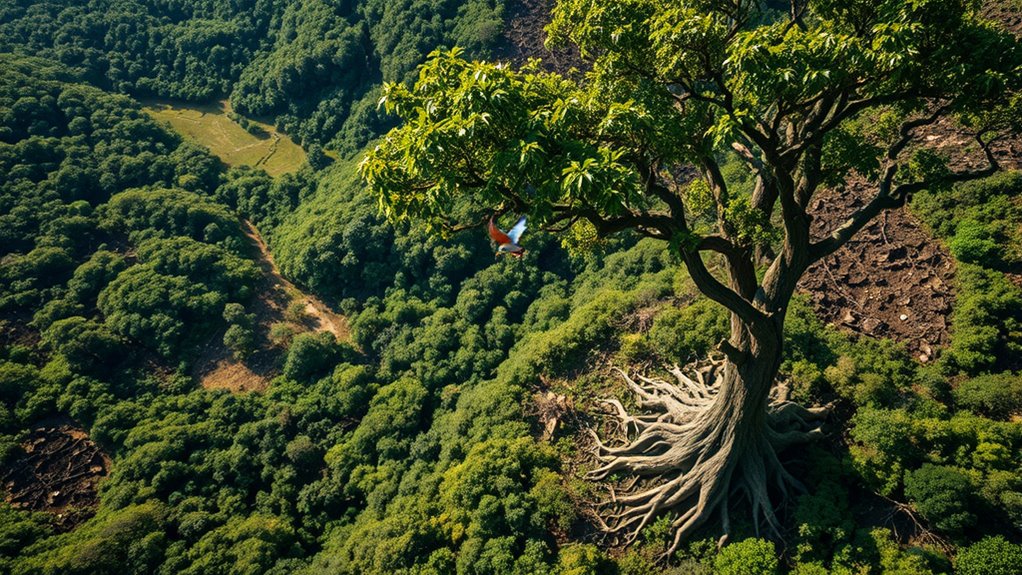The ongoing crisis in genetic diversity threatens over 60% of wild species with extinction because habitat loss, invasive species, and fragmentation cut off gene flow, reducing variation. Without genetic diversity, species struggle to adapt or recover from disturbances, making them vulnerable to disease and environmental changes. Protecting ecosystems and supporting conservation efforts can help preserve these essential genes. Keep exploring how you can contribute to safeguarding our planet’s biodiversity and guarantee a resilient future.
Key Takeaways
- Reduced genetic diversity weakens species’ ability to adapt to environmental changes, increasing extinction risk.
- Habitat fragmentation isolates populations, leading to genetic bottlenecks and loss of variation.
- Invasive species and habitat destruction further diminish genetic pools of native species.
- Low genetic variation makes species more vulnerable to diseases and pests.
- Protecting genetic diversity through conservation efforts enhances ecosystem resilience and long-term survival.
The Importance of Genetic Diversity for Ecosystem Resilience
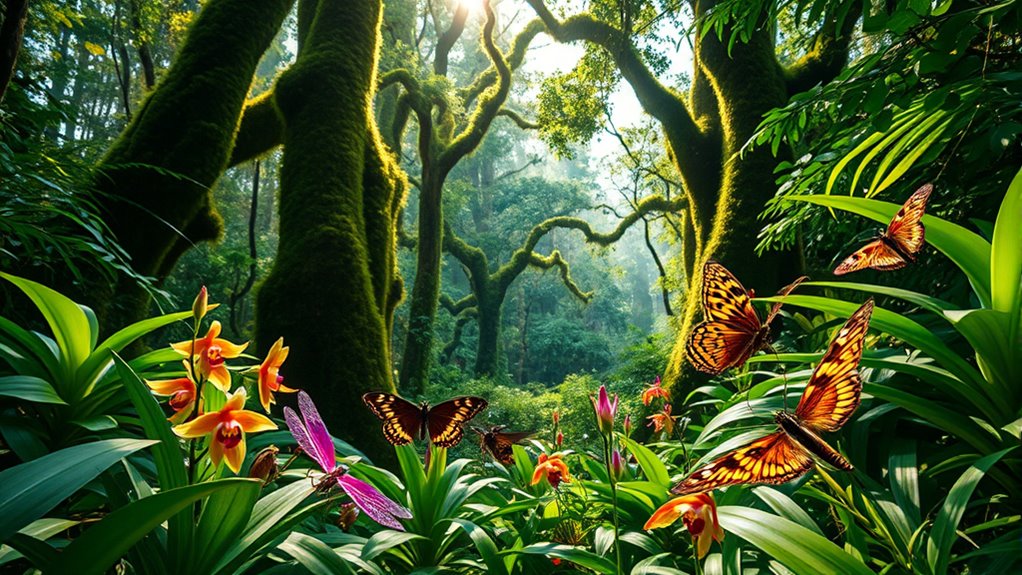
Genetic diversity is the foundation of a healthy and resilient ecosystem. It allows species to undergo genetic adaptation, helping them survive changing conditions and threats like disease or climate shifts. When genetic variation is high, ecosystems can recover more quickly from disturbances, maintaining stability and productivity. Biodiversity hotspots, rich in diverse species and genetic material, exemplify ecosystems with exceptional resilience. If a species lacks genetic diversity, it becomes more vulnerable to extinction, weakening the entire ecosystem’s stability. Preserving genetic diversity ensures ecosystems can adapt and thrive despite challenges. Additionally, genetic variation within populations is crucial for the long-term survival of species. By protecting areas with high biodiversity, you support the genetic richness necessary for resilience, ensuring nature’s ability to withstand environmental pressures and continue providing essential services to all living beings.
Major Factors Contributing to Species Decline
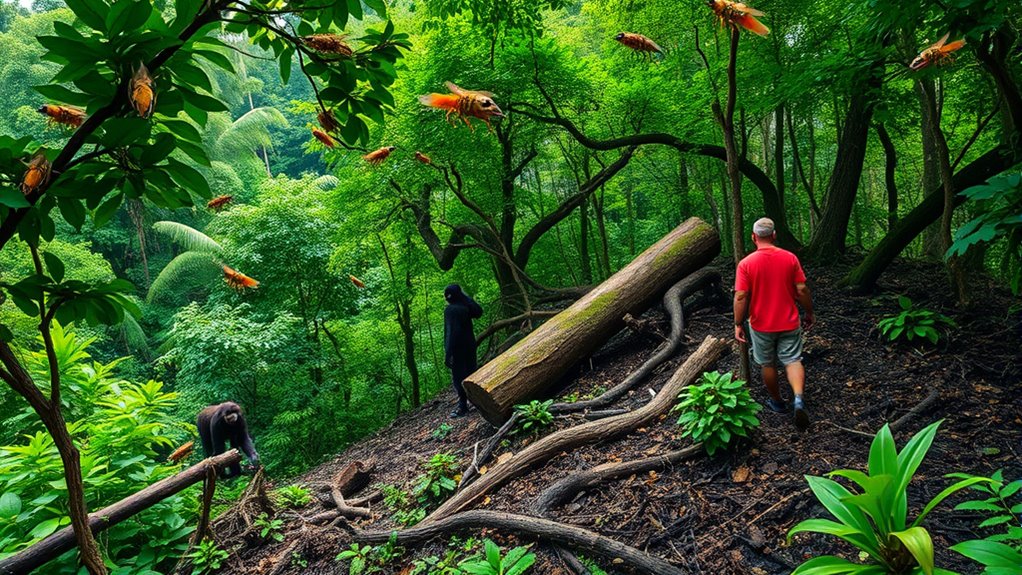
While maintaining genetic diversity is essential for species survival, numerous external factors threaten to push many species toward extinction. Habitat fragmentation splits ecosystems into smaller, isolated patches, making it harder for populations to find mates, reproduce, and adapt. This reduces genetic variation and weakens species resilience. Invasive species also play a significant role; they outcompete native species for resources, introduce new diseases, and disrupt ecological balances. As native populations decline due to these pressures, their genetic diversity diminishes further, leaving them more vulnerable to environmental changes and other threats. Additionally, sustainability practices in conservation efforts are crucial for mitigating these impacts. Together, habitat fragmentation and invasive species create a hostile environment for many wild species, accelerating their decline and pushing them closer to extinction. Addressing these factors is essential to conserve biodiversity.
Consequences of Losing Genetic Variation
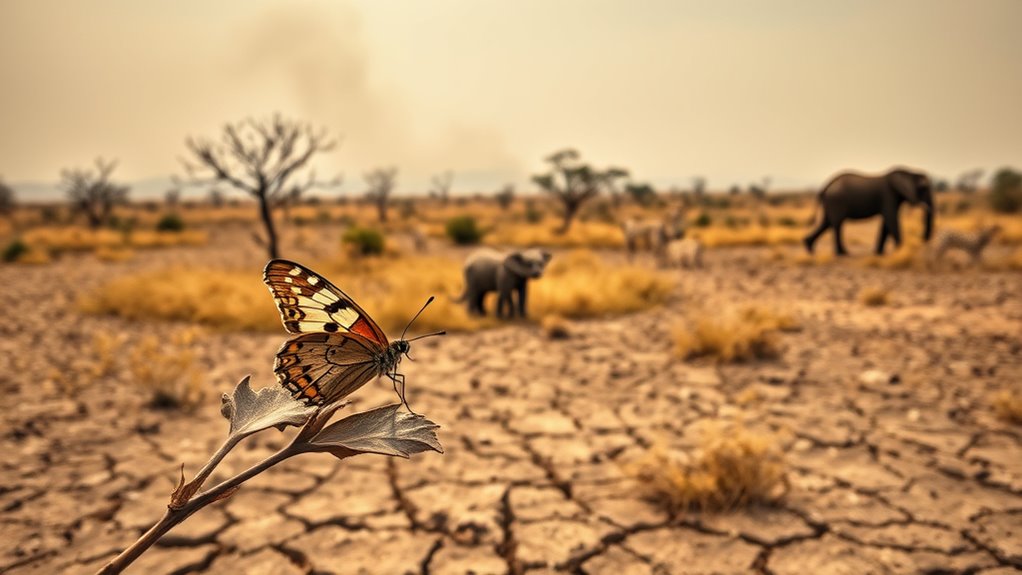
Losing genetic variation can have serious consequences for the survival of species, reducing their ability to adapt to changing environments. When populations experience genetic bottlenecks, their genetic diversity sharply declines, leaving them more vulnerable to diseases, pests, and environmental shifts. Without enough genetic variation, species struggle to develop beneficial traits needed to survive new challenges. This diminished adaptive capacity hampers their ability to evolve quickly enough, increasing the risk of extinction. You may notice that species with low genetic diversity are less resilient, often failing to recover from disturbances. Ultimately, the loss of genetic variation weakens the foundation of a species’ survival, making it harder to withstand future threats and survive over the long term. genetic diversity plays a crucial role in maintaining healthy populations and ensuring their capacity to adapt to environmental changes.
Strategies for Preserving Wild Species and Their Genes
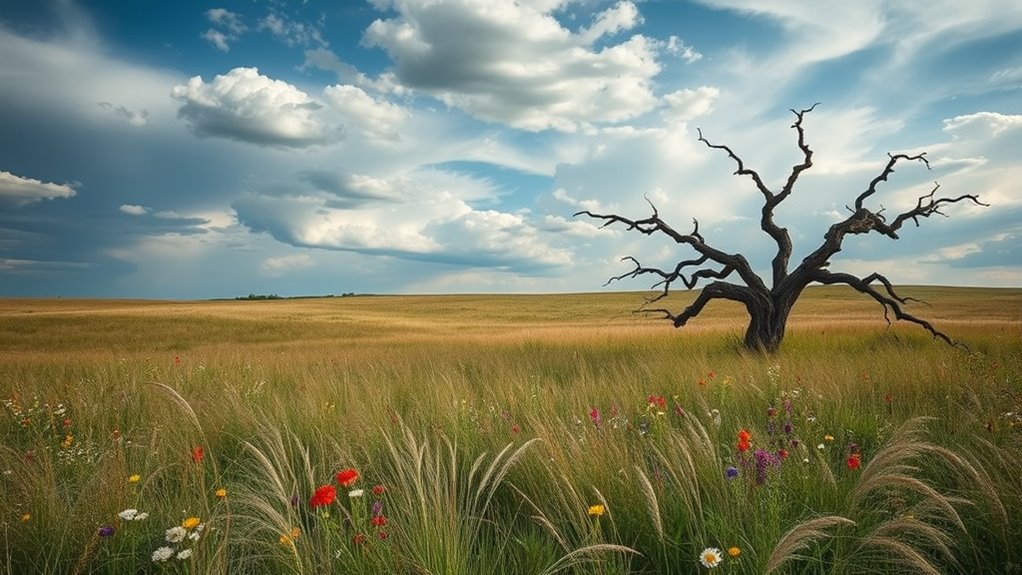
Protecting the genetic diversity of wild species requires targeted strategies that can safeguard their populations from further decline. One key approach is facilitating gene flow between isolated populations, which promotes genetic adaptation and resilience. By connecting fragmented habitats or establishing wildlife corridors, you help guarantee that genes circulate freely, reducing inbreeding and increasing diversity. Conservation programs also focus on capturing and preserving genetic material through seed banks and gene banks, allowing reintroduction or reinforcement of populations. Additionally, managing habitats to support natural adaptation processes ensures species can respond to environmental changes. Understanding genetic diversity is crucial for designing effective conservation strategies that sustain species’ long-term survival. Implementing these strategies helps maintain robust genetic variation essential for species’ survival, enabling their populations to adapt naturally and withstand threats like climate change, habitat loss, and disease.
How Individuals Can Help Protect Biodiversity

You can make a meaningful difference in conserving biodiversity by taking simple, everyday actions. One way is supporting seed banking initiatives, which preserve genetic diversity for future restoration projects. You can also participate in citizen science programs, helping collect valuable data on local species and ecosystems. Additionally, you can reduce your ecological footprint by choosing sustainable products and minimizing waste. Incorporating privacy and cookie management practices in your online activities can also raise awareness about responsible environmental behavior. Here are some specific actions you can take:
- Volunteer with local conservation organizations or citizen science projects to monitor and document wildlife.
- Support seed banks by donating funds or spreading awareness about their importance.
- Make eco-friendly choices, such as planting native species and avoiding pesticides that harm pollinators.
Every small effort counts in protecting our planet’s biodiversity.
Frequently Asked Questions
How Does Genetic Diversity Influence Species’ Adaptation to Climate Change?
Genetic diversity directly impacts a species’ ability to adapt to climate change. When you have high genetic resilience, your populations can better withstand environmental shifts by evolving beneficial traits. This enhances their adaptive capacity, allowing them to survive and thrive amid changing conditions. Without sufficient genetic variation, your species risks reduced adaptability, making it more vulnerable to extinction as climate factors continue to shift rapidly.
What Are the Most Endangered Wild Species Due to Genetic Erosion?
You should know that species most endangered due to genetic erosion often face genetic bottlenecks, drastically reducing their genetic variation. This makes them vulnerable to diseases and environmental changes. Hybridization risks can also threaten their genetic integrity, leading to loss of unique traits. These factors put species like certain amphibians, marine mammals, and plants at higher extinction risk, emphasizing the urgent need for conservation efforts to preserve their genetic diversity.
Can Genetic Engineering Help Recover Extinct or Critically Endangered Species?
You might wonder if genetic engineering can bring back extinct or critically endangered species. While genetic modification offers promising tools, it’s not a straightforward solution. Ethical considerations arise around altering nature and potential ecological impacts. Although scientists have made strides with cloning and gene editing, restoring entire species remains complex. You should weigh both the potential benefits and moral dilemmas before relying on genetic engineering for conservation efforts.
How Do Invasive Species Impact the Genetic Diversity of Native Populations?
Invasive species substantially impact the genetic diversity of native populations. When invasive species establish themselves, they often compete for resources, leading to reduced population sizes of native species. This can cause genetic bottlenecks, decreasing variation and adaptability. You might notice that invasive species dilute the gene pool, making native populations more vulnerable to disease and environmental changes. Their genetic impact threatens long-term survival of native species and ecosystem stability.
What Role Do Indigenous Communities Play in Conserving Genetic Diversity?
You can play a crucial role in conserving genetic diversity by supporting indigenous governance and cultural preservation. Indigenous communities often hold traditional knowledge and practices that protect local species and ecosystems. By respecting their leadership and collaborating with them, you help guarantee sustainable management of biodiversity. Your support promotes the safeguarding of cultural heritage and enhances efforts to maintain genetic diversity, ultimately benefiting ecosystems and future generations.
Conclusion
You stand at the edge of a vibrant forest, its songs fading as species vanish and genetic threads unravel. Every action you take can weave new hope—plant a tree, support conservation, spread awareness. Picture a world where colors bloom, rivers run free, and wild voices echo strong. Your choices can nurture this future, restoring the delicate balance. Together, we hold the power to turn the tide, safeguarding the rich tapestry of life for generations to come.
